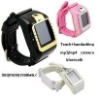- Remote Control[1]
- LCD Modules[3]
- Fiber Optic Equipment[8]
- Power Cables[1]
- Rigid PCB[1]
- Mobile Phones[34]
- Gears[1]
- DVD[1]
- Mouse[2]
- Alarm[2]
- Video Door Phone[3]
- Time Recording[1]
- Projectors[1]
- Routers[10]
- Network Switches[10]
- Other Networking Devices[10]
- Network Cards[4]
- Other Computer Products[2]
- Corded Telephones[6]
- Other Telecommunications Products[4]
- VoIP Products[2]
- Firewall & VPN[8]
- CCTV DVR[9]
- CCTV Camera[10]
- Connectors[2]
- Other Surveillance Products[4]
- Audio & Video Cables[3]
- Set Top Box[6]
- Alcohol Tester[8]
- Testing Equipment[2]
- Satellite TV Receiver[10]
- Hard Drives[3]
- Switching Power Supply[1]
- Communication Cables[1]
- Card Readers[6]
- Other Computer Parts[1]
- Modems[1]
- Wireless Networking Equipment[2]
- Contact Person : Mr. Yang Hai
- Company Name : Shenzhen CNET Network & Technology Co., Ltd.
- Tel : 86-755-83690233,83690031,83690389
- Fax : 86-755-83690322
- Address : Guangdong,Shenzhen,Room 6c, Building A, Fuqiao Garden, Fuhua Road, Futian, Shenzhen City, Guangdong Province. China
- Country/Region : China
- Zip : 518000
video phone + mobile phone P600+video camera
Detailed Product Description
video phone + mobile phone P600+video camera is not as standardized as its earlier counterpart, the telephone, resulting in a variety of names and terms being used worldwide, and even within the same region or country. Videophones are also known as videotelephones (or video telephones) and often by an early trademarked name "Picturephone", which was the world's first commercial videophone produced in volume. The compound name 'videophone' slowly entered into general use after 1950, although 'video telephone' likely entered the lexicon earlier after 'video' was coined in 1935.
Videophone calls can be referred to as 'videocalls'. They differ from in that they expect to serve individuals, not groups. However that distinction is becoming increasingly blurred with technology improvements such as and sophisticated that can allow for multiple parties on a call. In general everyday usage the term videoconferencing is now frequently used instead of video phonecall for point-to-point calls between two units. Both videophone calls and videoconferencing can also be referred to as a video link.
are popular, relatively low cost devices which can provide live video and audio streams via personal computers, and can be used with many for video calls. A separate webpage article is devoted to that product.
A is generally higher cost than a videophone and deploys greater capabilities. A videoconference (also known as a videoteleconference) allows two or more locations to interact via live two-way video and audio transmissions simultaneously. This is generally accomplished by the use of a (a centralized distribution and call management system) or by a similar non-centralized multipoint capability embedded in each videoconferencing unit. Again, technology improvements have circumvented traditional definitions by allowing multiple party videoconferencing via web-based applications.[] A separate webpage article is devoted to .











